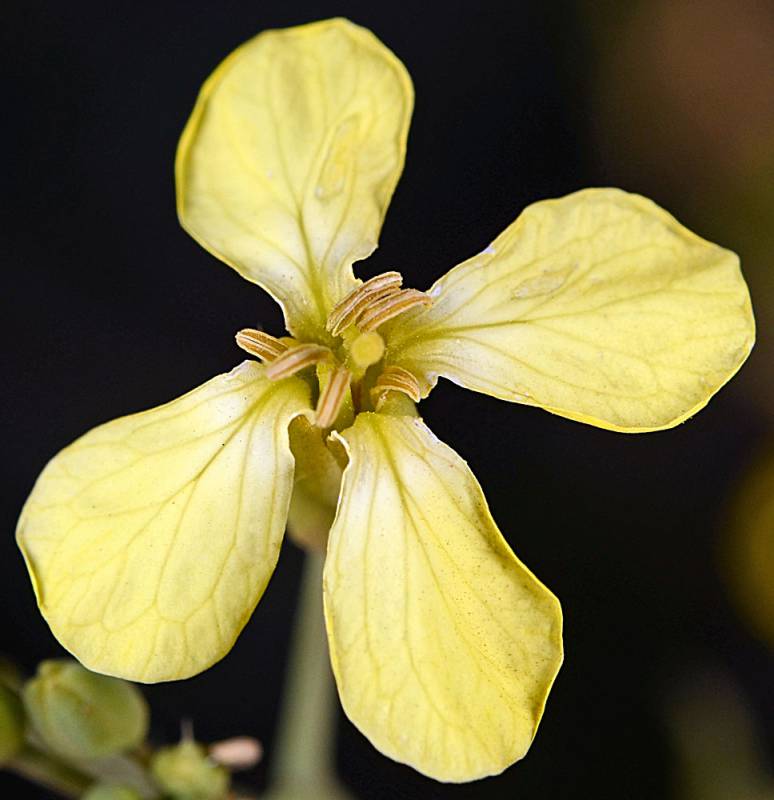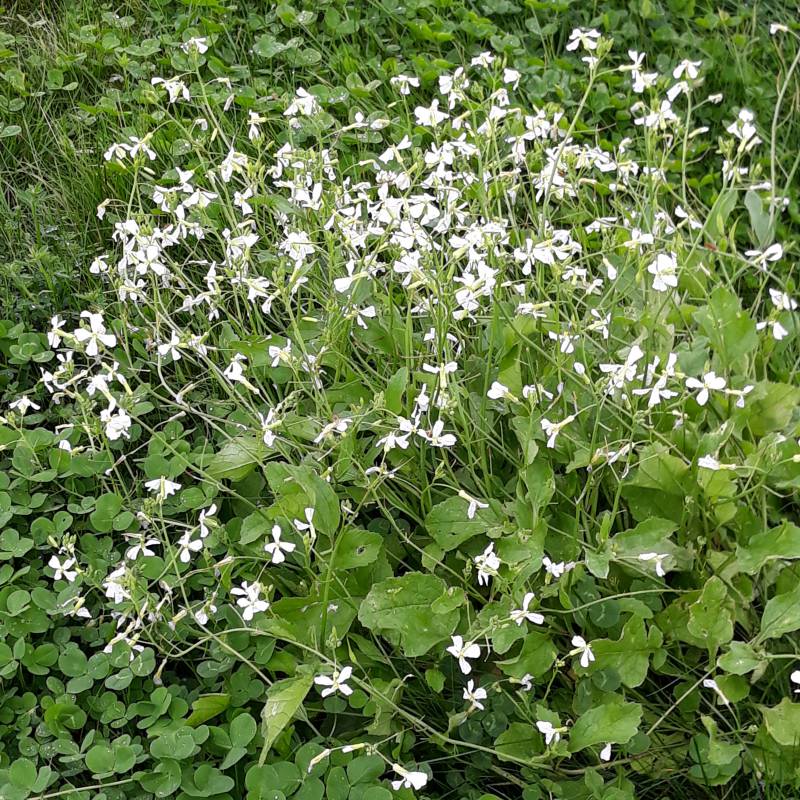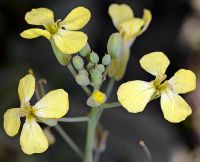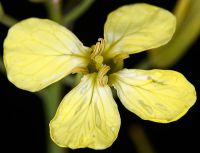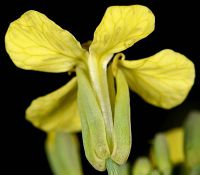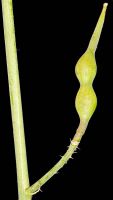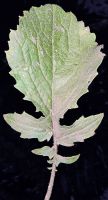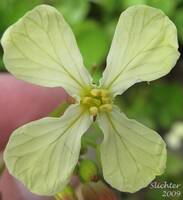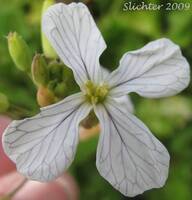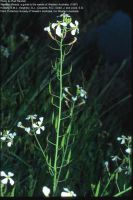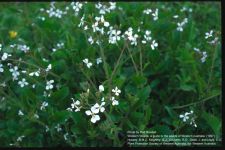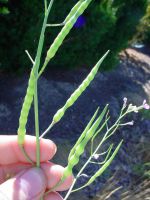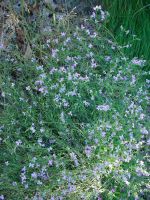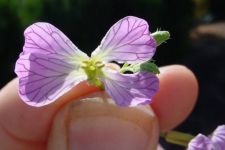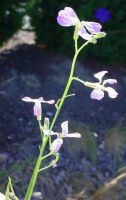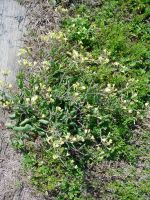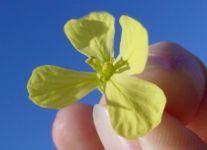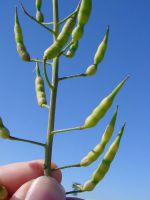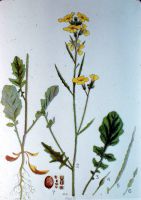Distribution: Occurring in scattered locations chiefly west of the Cascades crest in Washington; Alaska to California, east to the Atlantic Coast.
Habitat: Roadsides, fields, ditches, wastelots, and other distrubed, open areas at low elevations.
Flowers: May-October
Origin: Introduced, probably from the Mediterranean region
Growth Duration: Annual, Biennial
Conservation Status: Not of concern
Pollination: Bees, flies, butterflies
Annual or biennial herb from a small taproot, sparsely pubescent with stiff, pungent hairs, the stems 3-8 dm. tall, freely-branched above.
Basal leaves lyrate-pinnatifid, 6-20 cm. long; cauline leaves alternate, several, reduced, all petiolate.
Inflorescence of large, often compound, bractless racemes; pedicles ascending, 1-2.5 cm. long; sepals 4, the outer pair saccate at the base; petals 4, usually yellow, often purple tinged or veined, clawed, obovate, 15-20 mm. long; stamens 6.
Siliques terete, 4.5-6 cm. long and 3-6 mm. broad, 2-segmented, the lower segment short, not seed-bearing, the upper segment 1-celled, constricted between the seeds, tapering to a beak-like tip 1-2 cm. long.
Publication: Sp. Pl. 1: 669. 1753.
PNW Herbaria: Specimen records of Raphanus raphanistrum in the Consortium of Pacific Northwest Herbaria database.
WA Flora Checklist: Raphanus raphanistrum checklist entry.
OregonFlora: Raphanus raphanistrum information.
E-Flora BC: Raphanus raphanistrum atlas page.
CalPhotos: Raphanus raphanistrum photos.
USDA Plants: Raphanus raphanistrum information.

